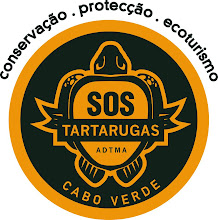Our own tourism programme is very small by comparison, sixteen people a night on two different beaches and we rely on this to fund our protection work. From the outset, our view was that the only way to stop people killing turtles on Sal was to deter hunting and the best way to do this in the short term is to have people on the beaches watching what is going on. There is no doubt that taking guests (which includes groups of local residents, returning emigrants, politicians and school children) to watch nesting is an important part of this strategy and it has a strong role in educating people regarding the imminent extinction of loggerheads in this country.
The problems come when poor practices start to creep in. There have always been local tour guides taking guests to the beach at night during the season, but sadly, the majority are not well informed and do not adhere to international turtle watching guidelines. We have seen tour guides with large groups (20+), allowing their guests to use flash photography, walk on top of nests and even sit on the turtle for a photograph. One tour guide regularly turns the turtles upside down so guests can get a good look at her. Another abandoned a turtle to hunters without calling either SOS Rangers or the police (fortunately we were in time to save her). We do not want to prevent others taking guests to the beach, but we urgently need regulations and a licensing system to prevent things getting out of hand.
 A recently written report (Nesting activity of Caretta caretta and Beach Surveillance on Sal Island - Silvia P. P. Lino) states that the decline in mortality of nesting loggerheads on Sal
A recently written report (Nesting activity of Caretta caretta and Beach Surveillance on Sal Island - Silvia P. P. Lino) states that the decline in mortality of nesting loggerheads on Sal"can be considered a good indicator that the presence of highly trained Rangers on the nesting beaches does not disturb the turtles and allows them to nest successfully, in contrast to areas where the presence of hunters and other human activity (such as in Santa Maria) have a negative influence on the nesting activity."
In the meantime we love this photo from Nat Geo's photos of the year.






No comments:
Post a Comment